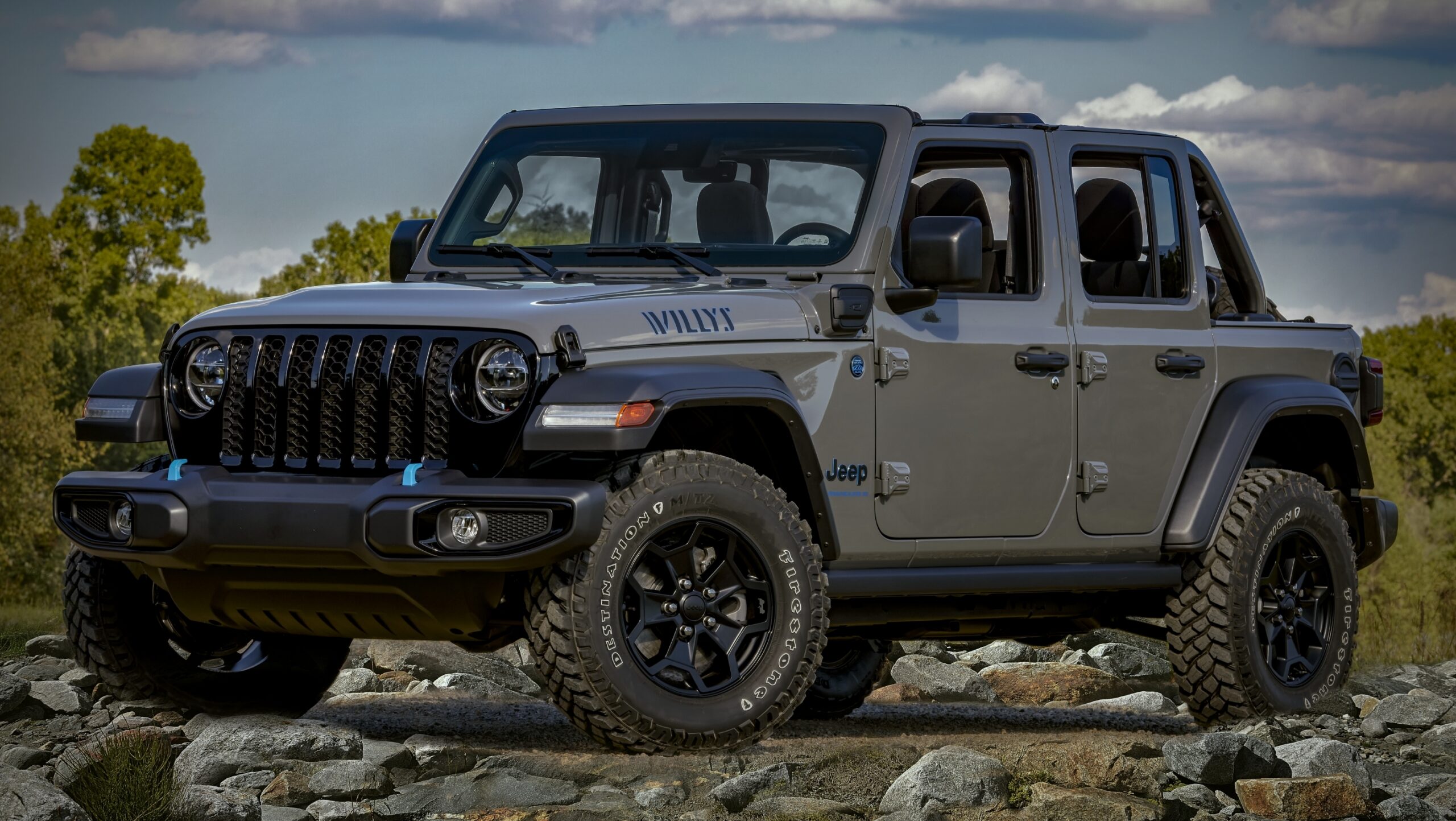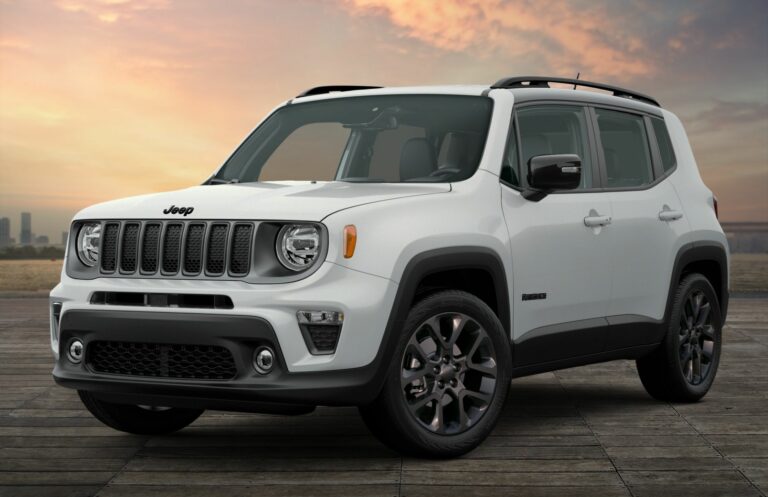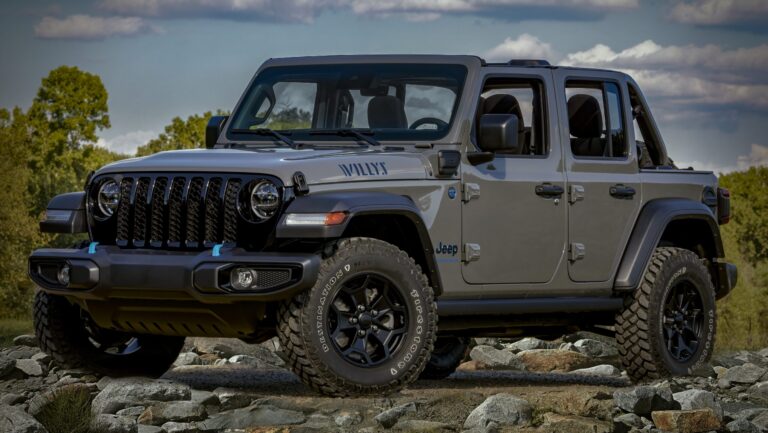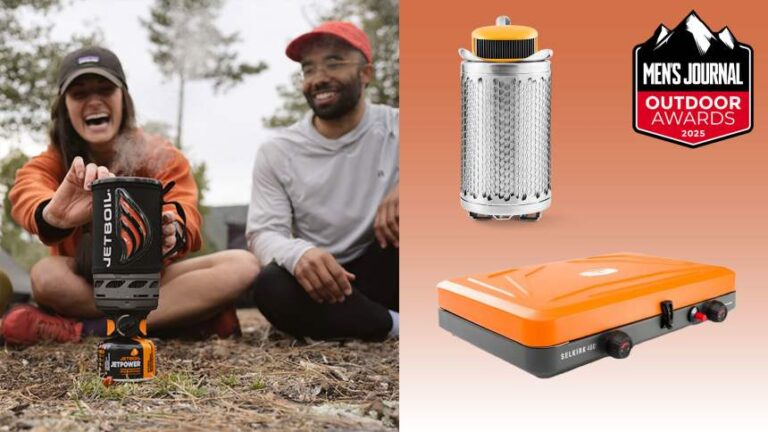Jeep 1990 Cherokee For Sale: Your Comprehensive Buyer’s Guide
Jeep 1990 Cherokee For Sale: Your Comprehensive Buyer’s Guide jeeps.truckstrend.com
In the vast landscape of automotive history, few vehicles command the enduring affection and cult status quite like the Jeep Cherokee XJ. And among its storied lineage, the 1990 model year holds a special place, representing a sweet spot before significant changes, yet benefiting from years of refinement. If you’re seeing a "Jeep 1990 Cherokee For Sale" listing, you’re not just looking at a used car; you’re eyeing a piece of American automotive icon, a rugged, versatile, and surprisingly capable machine that continues to capture the hearts of off-road enthusiasts, DIY mechanics, and classic car aficionados alike.
This comprehensive guide is designed to equip you with everything you need to know when considering a 1990 Jeep Cherokee. From understanding its timeless appeal and key specifications to navigating the buying process, identifying common issues, and even budgeting for ownership, we’ll delve deep into what makes this particular XJ a compelling purchase in today’s market.
Jeep 1990 Cherokee For Sale: Your Comprehensive Buyer’s Guide
Why the 1990 Jeep Cherokee Still Charms
The XJ generation Cherokee, produced from 1984 to 2001, is celebrated for its groundbreaking unibody construction, which offered a lighter, more car-like ride than traditional body-on-frame SUVs, without sacrificing true off-road capability. The 1990 model year, specifically, is a fan favorite for several reasons:
- Iconic Design: Its boxy, utilitarian, yet undeniably handsome lines have aged gracefully. It’s a design that screams "Jeep" without the bulk of larger SUVs, making it equally at home on city streets or challenging trails.
- Robust Powertrain: The star of the show for most XJ enthusiasts is the legendary 4.0-liter inline-six engine. In 1990, this was the Renix (Renault/Bendix) fuel-injected version, renowned for its incredible durability, ample torque, and simple design. While the High Output (HO) version arrived in 1991, the Renix 4.0L is still a powerhouse, known for racking up hundreds of thousands of miles with proper maintenance.
- Legendary Off-Road Prowess: Thanks to its solid front (Dana 30) and rear (Dana 35 or Chrysler 8.25) axles, compact dimensions, and excellent approach/departure angles, the XJ is a formidable off-roader straight from the factory. Its relatively short wheelbase and narrow track make it agile on tight trails.
- Simplicity and Modifiability: The XJ’s straightforward mechanicals make it a joy for home mechanics. Parts are abundant and relatively inexpensive, and the aftermarket support for modifications – from suspension lifts to armor – is vast, allowing owners to tailor their Cherokee to their exact needs.
- Versatile Appeal: Whether you’re looking for a reliable daily driver, a weekend warrior for camping and trails, a dedicated rock crawler project, or simply a cool classic SUV, the 1990 Cherokee fits the bill.
![]()
Key Specifications and Features of the 1990 Model Year
Understanding the specific features of the 1990 model year is crucial for an informed purchase.

- Engine:
- 4.0L Renix Inline-Six (I6): This is the most common and desirable engine. It produced around 177 horsepower and 220 lb-ft of torque. Known for its strong low-end torque, ideal for off-roading.
- Less Common: 2.5L AMC Inline-Four (I4) and a rare 2.1L Renault Turbo Diesel (primarily in non-US markets).

- Transmissions:
- AW4 Automatic: A highly reliable 4-speed automatic transmission manufactured by Aisin-Warner. Most 4.0L models will have this.
- AX-15 Manual: A robust 5-speed manual transmission, also by Aisin-Warner, offering more control and often better fuel economy for those who prefer to row their own gears.
- Transfer Cases:
- NP231 Command-Trac: Part-time 4WD system (2WD, 4-High Part-Time, Neutral, 4-Low). This is the more common and generally preferred option for serious off-roaders due to its simplicity and strength.
- NP242 Selec-Trac: Full-time 4WD system (2WD, 4-Full Time, 4-Part Time, Neutral, 4-Low). Offers the convenience of driving in 4WD on pavement, useful in varying conditions.
- Axles:
- Front: Dana 30 (high-pinion).
- Rear: Dana 35 or Chrysler 8.25. The Chrysler 8.25 is generally considered stronger and more desirable than the Dana 35, especially for off-road use. Check the differential cover shape to identify (Dana 35 has a rounded/oval cover, 8.25 has a flatter, octagon-like shape).
- Trim Levels: The 1990 Cherokee came in various trims, influencing features and interior appointments:
- Pioneer/Sport: More basic, often cloth interiors, fewer power options.
- Laredo: Mid-range, often with chrome accents, upgraded cloth or vinyl interior, power windows/locks, cruise control.
- Limited/Briarwood: Top-tier trims, featuring leather seats, woodgrain trim (Briarwood), full power accessories, and sometimes unique exterior styling elements.
- Other Noteworthy Features: Power steering, power brakes, air conditioning (optional but common), AM/FM radio, various interior color schemes.
What to Look For When Buying a 1990 Jeep Cherokee (Inspection Guide)
When a "Jeep 1990 Cherokee For Sale" catches your eye, a thorough inspection is paramount. These vehicles are over 30 years old, and their condition can vary wildly.
-
Rust (The #1 Killer): Due to its unibody construction, rust can be a terminal issue.
- Rocker Panels & Floorboards: Check inside and out, especially near seat mounts.
- Frame Rails: Critically inspect the unibody rails, particularly where the leaf springs mount in the rear.
- Shock Mounts: Front and rear.
- Door Sills & Pinch Welds: Look for bubbling paint or perforation.
- Fenders & Quarter Panels: Especially around wheel wells.
- Under Carpet: Lift the carpets to check for floor pan rust.
- Avoid heavily rusted examples unless you’re prepared for extensive, costly fabrication.
-
Engine (4.0L Renix):
- Leaks: Common areas include the valve cover, oil pan, and especially the rear main seal. Minor leaks are common but excessive leaks suggest neglect.
- Overheating: Check for signs of a new radiator, hoses, or a history of overheating (can warp heads). Look for coolant in the oil or vice versa.
- Noise: Listen for excessive lifter tick, knocking, or unusual sounds.
- Sensors: The Renix system relies on several critical sensors (CPS – Crankshaft Position Sensor, TPS – Throttle Position Sensor, MAP sensor). Check for rough idle, stalling, or hesitation.
- Maintenance: Ask about oil change frequency, recent tune-ups (spark plugs, wires, cap, rotor), and coolant flushes.
-
Transmission & Transfer Case:
- Automatic (AW4): Check fluid color (should be red, not brown or black) and smell (shouldn’t smell burnt). Test all gears, ensuring smooth shifts without harsh clunks or slips.
- Manual (AX-15): Test clutch engagement, listen for grinding during shifts, and check for pop-outs.
- Transfer Case: Engage 4-High and 4-Low. Listen for grinding or clunking. Ensure the linkage isn’t sloppy. On NP242 (Selec-Trac), test 4-Full Time on pavement.
-
Suspension & Steering:
- "Death Wobble": A violent shaking of the front end at certain speeds. Indicates worn out steering components (tie rod ends, ball joints, track bar, control arm bushings). While fixable, it suggests neglect.
- Bushings: Inspect control arm bushings, leaf spring bushings, and sway bar bushings for cracks or deterioration.
- Shocks: Look for leaks or excessive bounce.
- Steering Box: Check for leaks and excessive play in the steering wheel.
-
Electrical System:
- Test all lights (interior/exterior), power windows, power locks, HVAC blower, radio, gauges, and wipers. XJs are known for occasional electrical gremlins, often due to aging wiring or grounds.
-
Interior:
- Headliner: Sagging headliners are extremely common.
- Seats: Check for tears, stains, and foam integrity.
- Dashboard: Cracks are common, especially on sun-exposed vehicles.
- Functionality: Test seatbelts, door handles, and window regulators.
-
Tires & Brakes:
- Check tire tread depth and even wear. Look for signs of uneven braking or pulsing during a test drive.
-
Maintenance Records: A stack of service records is a huge plus, indicating a diligent owner.
Pricing Your 1990 Jeep Cherokee: A Market Overview
The price of a 1990 Jeep Cherokee for sale can vary significantly based on condition, mileage, trim level, 2WD/4WD, transmission, and geographical location. The XJ market has seen a steady increase in value for well-maintained examples in recent years, as their classic appeal and utility are recognized.
Here’s a general price guide:
| Condition | Price Range (USD) | Key Characteristics |
|---|---|---|
| Excellent | $10,000 – $20,000+ | Low mileage (under 100k), minimal to no rust, original paint in great condition, flawless interior, fully functional, comprehensive maintenance records. Often garage-kept or restored. Rare finds. |
| Good | $5,000 – $9,999 | Moderate mileage (100k-200k), minor surface rust only, good mechanical condition with recent maintenance, clean interior with minor wear, all major components functional. Ready for daily driving or light off-roading with minimal immediate work. |
| Fair | $2,500 – $4,999 | Higher mileage (200k+), some visible rust (rockers, floor pans beginning), mechanical issues present but drivable (e.g., minor leaks, worn suspension components, non-working AC), interior wear and tear. Requires attention and repairs. |
| Project | $500 – $2,499 | High mileage, significant rust (structural concerns possible), multiple mechanical issues (engine/transmission problems, major leaks), rough interior, non-functional accessories. Best for experienced mechanics or as a parts donor. |
Factors Influencing Price:
- Rust: The single biggest determinant. Rust-free examples command a premium.
- Mileage: Lower mileage typically means higher price, but maintenance history is more important. A well-maintained 250k mile 4.0L can be better than a neglected 150k mile one.
- 4WD vs. 2WD: 4WD models are almost always more valuable.
- Transmission: Manuals (AX-15) can sometimes fetch a slightly higher price due to their rarity and enthusiast appeal.
- Trim Level: Laredo, Limited, and Briarwood trims often command more due to added features.
- Modifications: Quality, tasteful modifications (e.g., small lift, good tires) can add value. Poorly executed or extreme mods can detract.
- Geographic Location: Rust-belt states will have cheaper but rustier examples. Arid climates yield cleaner vehicles but potentially higher prices.
Common Upgrades and Modifications
Part of the XJ’s enduring appeal is its incredible modularity. Many owners choose to modify their Cherokees to enhance capability or aesthetics.
- Suspension Lifts: Most popular upgrade, typically 2-4 inches, to accommodate larger tires and improve ground clearance.
- Larger Tires: Often paired with a lift, improving traction and off-road capability.
- Aftermarket Bumpers & Armor: Steel bumpers, rock sliders, and skid plates protect the vehicle and allow for winches.
- Axle Upgrades: Swapping the rear Dana 35 for a stronger Chrysler 8.25 or Ford 8.8.
- Lighting: Upgrading to LED headlights or adding auxiliary off-road lights.
- Cooling System Improvements: Upgrading the radiator, water pump, and fan clutch for better thermal management, especially in hot climates or under heavy load.
- Steering Box Brace: Reinforces the unibody around the steering box, preventing frame cracks.
The Ownership Experience: Challenges and Rewards
Owning a 1990 Jeep Cherokee is more than just transportation; it’s an experience.
Challenges:
- Rust: As mentioned, it’s a constant battle, especially in wetter climates.
- Aging Components: Things will break. Expect to replace sensors, seals, bushings, and electrical components as they wear out.
- Fuel Economy: The 4.0L is robust but thirsty, typically yielding 15-20 MPG.
- Safety Features: Lacks modern safety features like airbags (early models), ABS (optional on some), and traction control. Drive defensively.
- Comfort: While surprisingly comfortable for its age, it’s not a luxury vehicle. Road noise, vibrations, and firm seats are part of the charm.
Rewards:
- Reliability (with maintenance): The 4.0L engine is incredibly robust and will last for hundreds of thousands of miles if cared for.
- Off-Road Prowess: Few vehicles can match its capability right out of the box, especially for its size.
- Strong Community: A massive, supportive online community (forums, Facebook groups) and local clubs make troubleshooting and finding parts easy.
- Ease of Repair: Simple mechanics mean many repairs can be done by a DIY enthusiast.
- Customization Potential: A blank canvas for personalizing your vehicle.
- Classic Appeal & Collectibility: Values are trending upwards, making a good XJ a potential investment.
- Sheer Fun: There’s a unique satisfaction in driving and maintaining an XJ, a feeling of connection to the road (or trail) that modern vehicles often lack.
Practical Advice and Actionable Insights
- Always Get a Pre-Purchase Inspection (PPI): If you’re serious about a "Jeep 1990 Cherokee For Sale," pay a trusted independent mechanic (ideally one familiar with Jeeps) to inspect it thoroughly, especially for rust and major mechanical issues.
- Budget for Immediate Maintenance: Even a "good" condition XJ will likely need some immediate attention (fluids, filters, spark plugs, possibly tires or brakes). Factor this into your purchase price.
- Don’t Fear High Mileage (If Maintained): For the 4.0L, mileage is less important than maintenance history. A 200,000-mile XJ with detailed records is often a better buy than a 100,000-mile one with no history.
- Join the Community: Before or after buying, immerse yourself in XJ forums and social media groups. They are invaluable resources for advice, troubleshooting, and parts sourcing.
- Be Realistic: Understand you’re buying a 30+ year old vehicle. It will require attention and won’t drive like a new car. Embrace its quirks.
Frequently Asked Questions (FAQ)
Q1: Is the 1990 Jeep Cherokee reliable?
A1: Yes, especially the 4.0L inline-six engine, which is legendary for its durability. However, like any 30+ year old vehicle, components wear out. With proper maintenance and addressing common issues, it can be extremely reliable.
Q2: What’s the difference between the 1990 (Renix) 4.0L and later (HO) 4.0L engines?
A2: The 1990 4.0L uses the Renix fuel injection system, which has different sensors and a slightly different wiring harness compared to the High Output (HO) system introduced in 1991. The HO engine has a bit more horsepower (190hp vs 177hp) and a slightly different cylinder head. Both are excellent engines, but parts specific to the Renix system can sometimes be harder to find than HO parts.
Q3: What is "death wobble" and how do I fix it?
A3: "Death wobble" is a violent, uncontrollable shaking of the front end, usually occurring at certain speeds after hitting a bump. It’s not a factory defect but a symptom of worn-out front-end components like the track bar, tie rod ends, ball joints, or control arm bushings. It’s fixable by systematically replacing worn parts.
Q4: Is a 1990 Cherokee good for daily driving?
A4: It can be. The XJ is compact and maneuverable. However, consider its modest fuel economy, older safety features, and the potential for an older vehicle to require more frequent maintenance than a modern car. Many enthusiasts use them as daily drivers without issue.
Q5: Are parts hard to find for the 1990 Cherokee?
A5: No, parts for the XJ Cherokee, especially the 4.0L engine, are widely available from aftermarket suppliers, auto parts stores, and even some Mopar dealers. Its immense popularity ensures a robust parts market.
Q6: How much does it cost to lift a 1990 Cherokee?
A6: Lift kit prices vary widely depending on the height and quality of components. A basic 2-3 inch budget boost might be a few hundred dollars, while a comprehensive 4-6 inch long-arm lift kit with new shocks and control arms can run into several thousands. Installation costs also vary.
Q7: What’s the most important thing to check for rust?
A7: The unibody frame rails, particularly the sections above the leaf springs in the rear and around the steering box in the front. Also, check the rocker panels and floorboards thoroughly.
Conclusion
The 1990 Jeep Cherokee XJ remains a compelling vehicle for sale, offering a unique blend of classic SUV charm, legendary off-road capability, and a robust, simple design that appeals to a wide audience. It’s not just a vehicle; it’s a lifestyle, a platform for adventure, and a testament to enduring automotive engineering.
While buying a 30-year-old vehicle comes with its challenges, a thorough inspection, realistic expectations, and a commitment to proper maintenance will ensure that your 1990 Cherokee provides years of reliable service and countless memorable experiences. If you find a well-preserved example, you’ll be acquiring more than just a car; you’ll be joining a passionate community and owning a piece of genuine American automotive heritage. Happy hunting, and may your XJ adventures be legendary!





